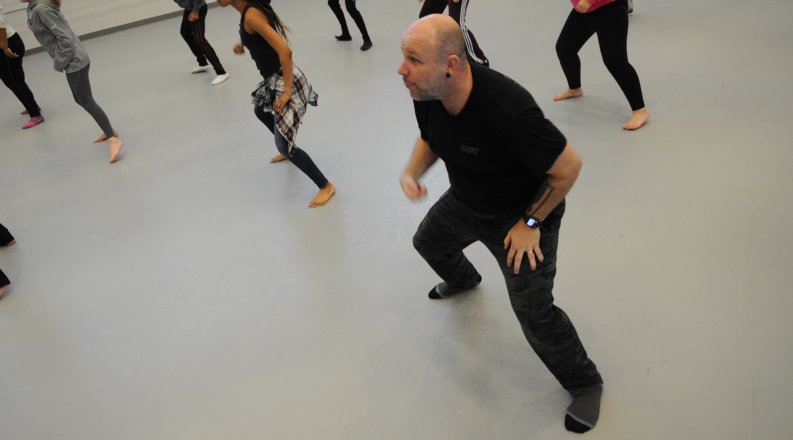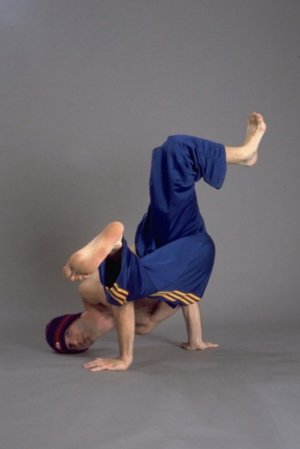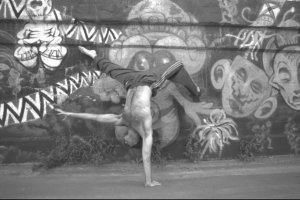By Jonah Grinkewitz
After debuting at the Summer Youth Olympic Games in 2018, breaking will be included in the Paris Olympic Games later this month.
Also referred to as breakdancing, b-boying or b-girling, the street dance style originated in the Bronx borough of New York City in the 1970s and features acrobatic movements and stylized footwork. The dance movement is also tied to the birth of hip-hop, with DJs spinning rhythmic “breakbeats” for dancers to improvise.
James Morrow said the dance was called “going off” where he grew up in Chicago in the mid-80s. After seeing other kids in his neighborhood doing it, he started practicing the moves in his grandparent’s backyard.
“Each day I started to get closer and closer,” said Morrow, an associate professor of dance at Old Dominion University. “Finally, I got close enough where they started laughing and said, ‘Do you wanna try this?’”
Morrow, who teaches hip hop dance and culture, said he is conflicted about seeing breaking included in the Olympics.
“I consider it an art form, so it’s hard to make that delineation between sport and art,” he said. “Where is the artistry versus the athleticism and how do they meld together?”
Victor Montalvo, who will compete for Team USA in the breaking competition, also considers it an art form.
"A lot of people have a misconception of breaking and the stereotype, spinning on your butt, the head spin, dancing on the cardboard floor and rolling around the floor, but it's more than that," he said in an interview with People Magazine. "You're basically bringing your creativity, your imagination into this art form, and you're creating art and you're bringing your own personality.”
When it comes to judging the competition, Morrow said he is concerned power moves like air flares, headspins and windmills – what would be considered “downrock” – will count for more points than “top rock” where dancers are still standing.
“Then it no longer becomes the artistry of that movement,” he said. “It then becomes ‘Oh, I’ve gotta jack up all my moves to get the highest amount of points’ as opposed to doing the dopest 6-step with the smoothest style which is a really basic foundational movement but you can make it look amazing.”
Morrow said he was encouraged by how breaking was handled in the Youth Olympics but he is curious to see where it goes from there.
“I feel like there was a conscious effort to be true to the breaking community and how they judge it, but I do wonder if it’s going to become like figure skating – there’s five judges, they’re on a panel and they make their scores,” he said. “As opposed to all these breaking OGs (originals) who hold up a card with who won and they move on round-robin style.”
Despite breaking originating in the U.S., it was left off the list for the 2028 Olympic Games in Los Angeles, California – where Morrow said the “popping” and “locking” dance styles associated with breaking were invented.
Still, Morrow said the dance movement has found incredible popularity in other countries.
“What’s interesting is that all these other communities who got hold of it really tried to honor the way that it was done,” he said. “So if you go to like a Battle of the Year in Germany, the venue will be completely full of graffiti art. All the battles have music from a DJ spinning breakbeats. You’ll have MCs spitting lyrics in lots of different languages.”
Morrow concluded that the Olympics is going to give breaking exposure – which he said could be good or bad – but it remains to be seen how well they will honor the authenticity of the culture.
You can tune into the breaking competition scheduled for Aug. 9 and 10 where 16 B-boys and 16 B-girls will face off in solo battles to take home the first breaking Olympic medals.





